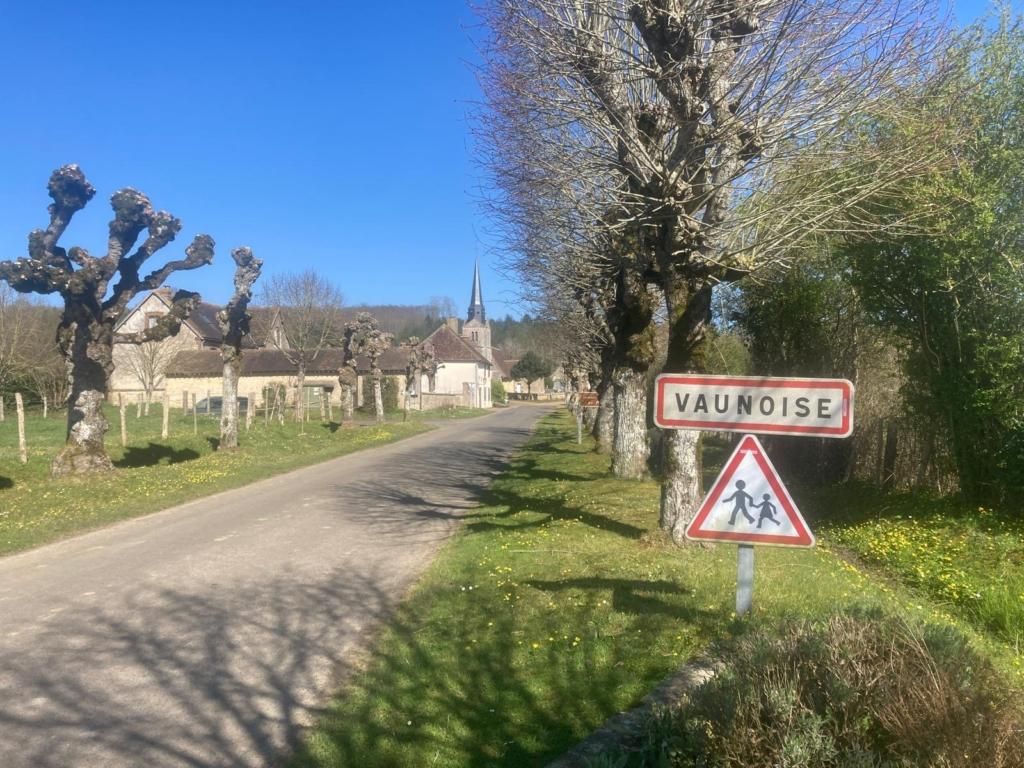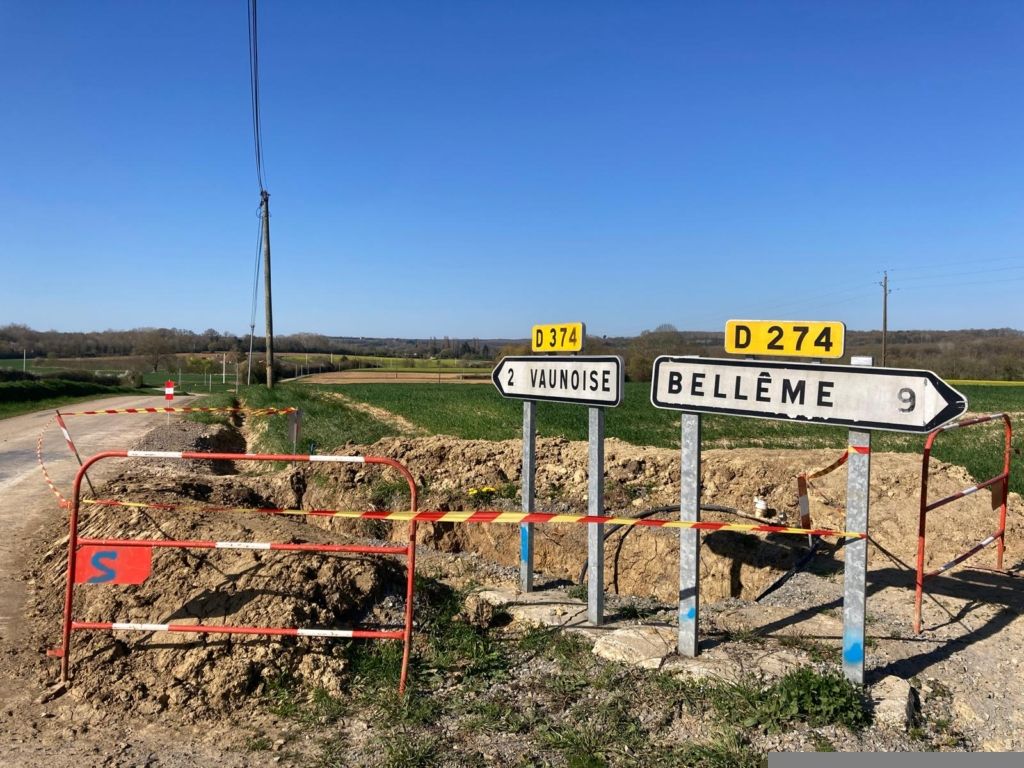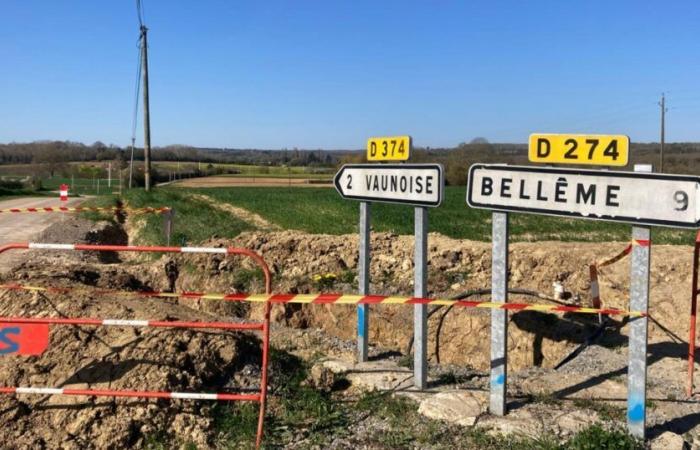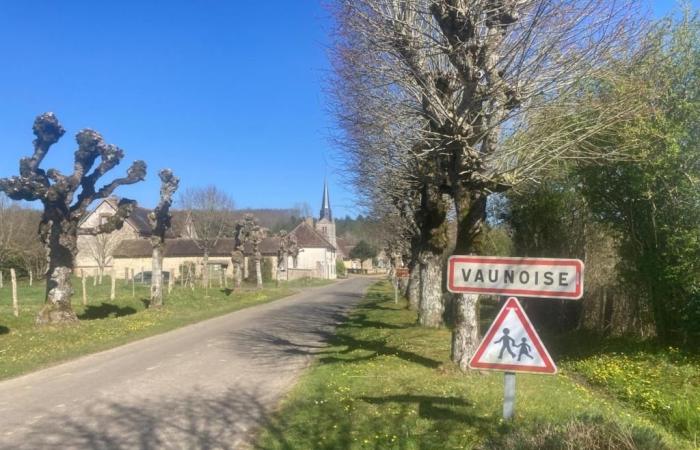It is a very small village in the south of the Orne: Vaunoise. Between the small stone houses and the daisies live some 103 inhabitants. In appearance, the town seems to be preserved from any site. But it is enough to move away a few meters upstream from the town to see the landscape change: red and white barriers border the roads, the earth is turned over, and plastic pipes emerge from the ground. “There has been work for several months, they replace all the pipes”reports Simone, resident of the village.
This article is the third and last part of a series on monomeric vinyl chloride, a toxic and carcinogenic gas present in many PVC pipes and yet largely unknown by the general public. A three -part survey carried out for Vert by Hugo Coignard, Marie-Aimée Copleutre and Marti Blancho.
This work began this winter to solve a Health problem: the presence of CVM in drinking water, a gas recognized as carcinogenic. In total, “Several houses are affected, all located outside the village”specifies the mayor of the town, Sophie Fontaine (without label). If these homes are contaminated at the CVM, it is because of PVC pipes, posed before the 1970s, which release this gas in the water.
To date, about eight homes out of fifty are contaminated by the CVM in Vaunoise, but it is difficult to obtain a precise figure in the number of affected dwellings, because the pollution measures have not been carried out throughout the municipality. Alone “a point “ Located in “The end of the network has been taken ”indicates the regional health agency (ARS) in Normandy, in charge of samples and water quality from the territory.

Vaunoise is the typical example of the 5,506 localities concerned by this pollution in France (see our map): rural, isolated, with dispersed dwellings. “These are the houses at the end of the water network that are affected by the CVM: the more a house is far from the initial distribution source, the more the water will stagnate in the pipes and load in CVM”, specifies Gaspard Lemaire, researcher in political science and teacher in environmental law to Sciences Po, who devoted a study on this subject.
The Orne is for these reasons one of the most polluted departments in the CVM with 1,196 contamination points listed by the ARS of Normandy.
Pollution that has lasted for 10 years
In Vaunoise, the problem is not new. According to ARS data, traces of CVM were detected in 2014, and at levels much higher than the European standard of 0.5 microgram per liter, beyond which water is considered non-potable.
The statements speak for themselves: in October 2014, the rate reached 5.5 micrograms; In March 2016, 5.4 micrograms and in 2020, 3.6. The presence of gas sometimes drops slightly, but it rarely returns to the regulatory threshold. In the summer of 2024, the result culminated to a disturbing peak: 9.5 micrograms, 19 times the authorized limit.
Alerted by this very high figure during this period, mayor Sandrine Fontaine called the ARS of Normandy, who then replied when work was going to be initiated and that a distribution of water bottles would be Set up for the residents concerned. The objective is that tap water is no longer consumed directly, or used for food use.
CVM levels above the standard
But why did you wait ten years before reacting since the first alert in 2014? Contacted, the president of the Southern Perche Water Syndicate, Arnaud Loiseau, responsible for informing the inhabitants and initiating the work, is justified: “Since I took the presidency of the union in 2020, this is a subject that I observed carefully, and we did not do anything since we have set up purges”.
The purges are indeed one of the solutions recommended by the health authorities. They have the advantage of being easy to implement in emergency, and generally effective. They consist in flowing large amounts of water through the pipes, until their evacuation in the soil, in order to reduce the stay of water in PVC pipes and, thus, reduce the concentration of CVM in tap water.
-However, a recourse perceived as “waste” by local residents, which remain little informed of the reasons for these purges. “The inhabitants regularly cut the automatic valves of the purges, it was complicated”, sighs Arnaud Loiseau.

For its part, the ARS also justifies the late management of the problem in Vaunoise by this use of automatic purges, “Set up in 2015”. She added that there was no need to intervene before the summer of 2024, since the quarterly monitoring of the surveys showed that “The distributed water was in accordance”. The ARS specifies: “It was only in 2024 that water control of water in this sector highlighted CVM contents greater than 0.5 micrograms per liter of water.”
However, according to the data transmitted by the ARS, which we have consulted, the automatic purges did not make it possible to maintain the CVM levels below this threshold. “We had ups and downs, it was a yoyo effect. Well, we closed our eyes for a long time, because we didn’t have time and it was heavy, but there are risks for the inhabitants ”ends up conceding Arnaud Loiseau.
Not applied law and little informed inhabitants
Vaunoise is added to the long list of French municipalities concerned by a CVM surpassing where, despite the law prohibiting the distribution of polluted water, compulsory measures have not been set up by the authorities.
A case similar to the Ornaise municipality, and very publicized at the start of the year, concerns the municipalities of Sury-aux-Bois and Châtenoy, in the Loiret. As with Vaunoise, high CVM rates were detected in 2014 in the two municipalities, but the inhabitants were informed only in 2023. Today, a dozen citizens carry legal action against their water union and the State, denouncing in particular the lack of information received.
Among the residents present in Vaunoise, very few seem to have been informed of the presence of CVM. A resident of the interviewed town declares “Do not know this gas”. Nothing abnormal, according to the town hall, which specifies that that the residents concerned by the presence of gas in their water – be those who live outside the village – have been warned.
However, the echo is very different on the side of the inhabitants who drink water contaminated by the CVM. Simone remains perplexed when asked for the reason for this work, however located less than a meter from her garden “I don’t know, they came to change that, but I didn’t follow too much.” She adds “Never have been getting water at the town hall”.
A little further, in one of the farms affected by the change of pipes, the owner reacts to the word CVM by ahead of the head: “Yes, I know. We were informed by the town hall, and we received bottles of water. But we have not received letters or precise statements on the quantity of CVM in the water. ”
On this informative vagueness, article R. 1321-30 of the public health code is clear. The person responsible for the production or distribution of water-here, the Water Syndicat-must prevent consumers concerned, as soon as non-compliance with quality limits is noted, asking them to no longer consume water.
The Water Syndicat is delayed: “Flyers have been left in the mailboxes of the inhabitants concerned by the exceeding of CVM. It is possible that between advertisements, they have gone unnoticed ”. A flyer has indeed been well distributed, according to the ARS, which also specifies that the results of CVM rates are published and available on the website of the Ministry of Health.
“Available on the internet? Ah maybe, but you know here, in rurality with the elderly, the paper mail is important, retorts a resident of the town. We would have liked to know a little more, it remains carcinogenic. ”










